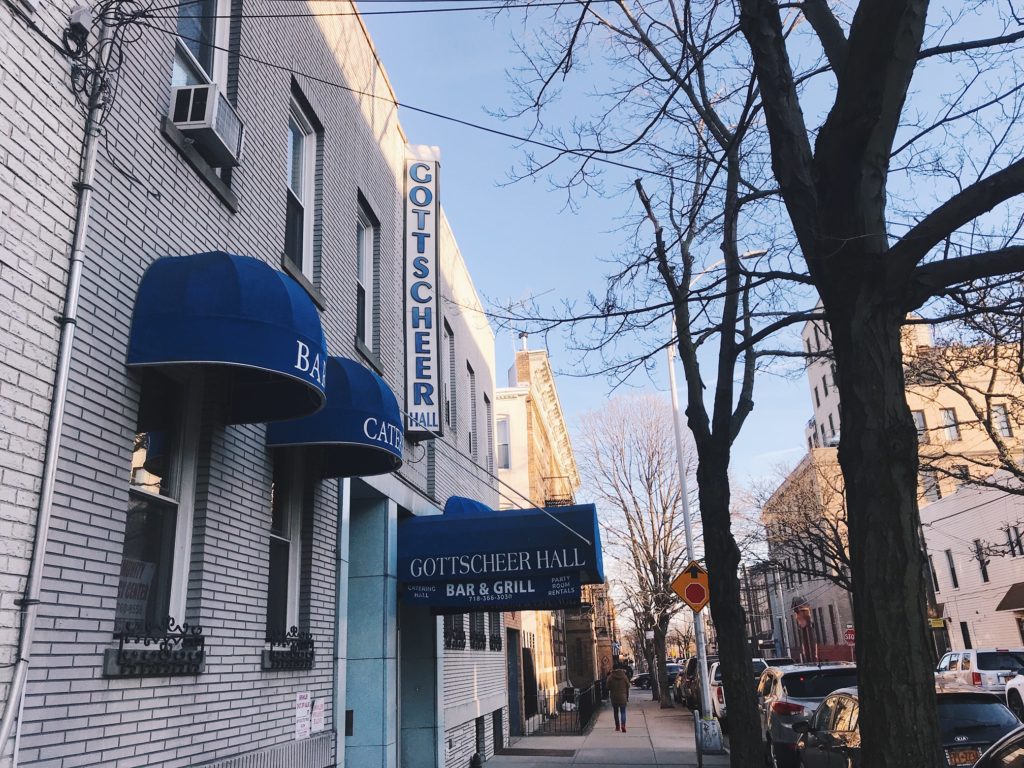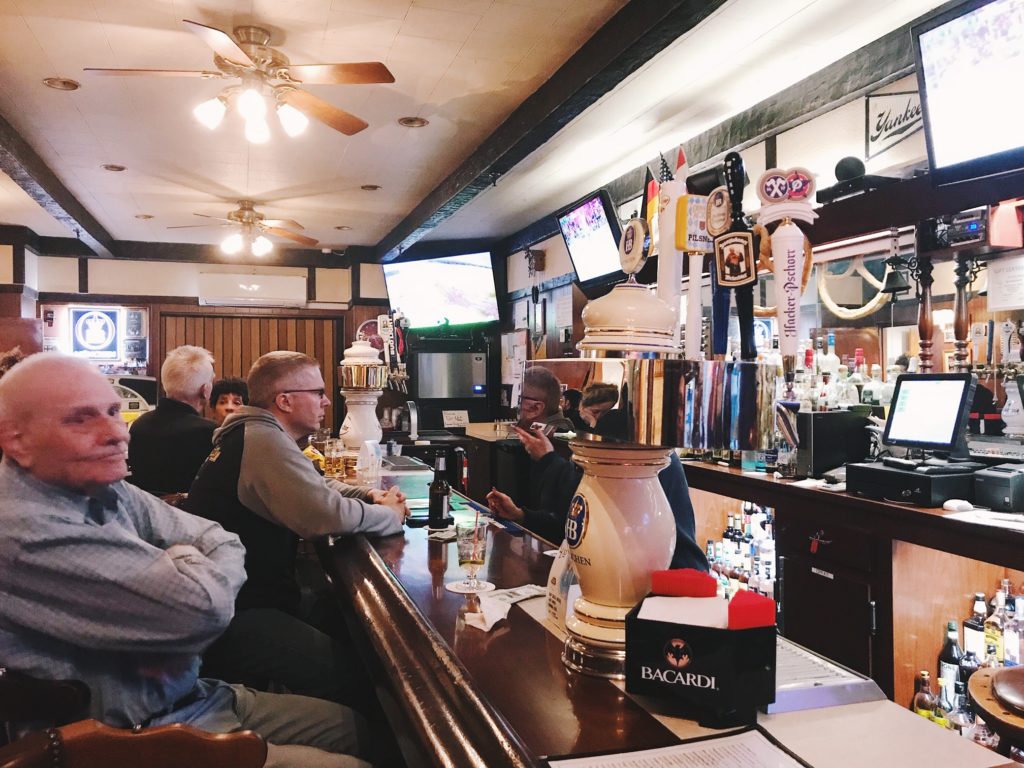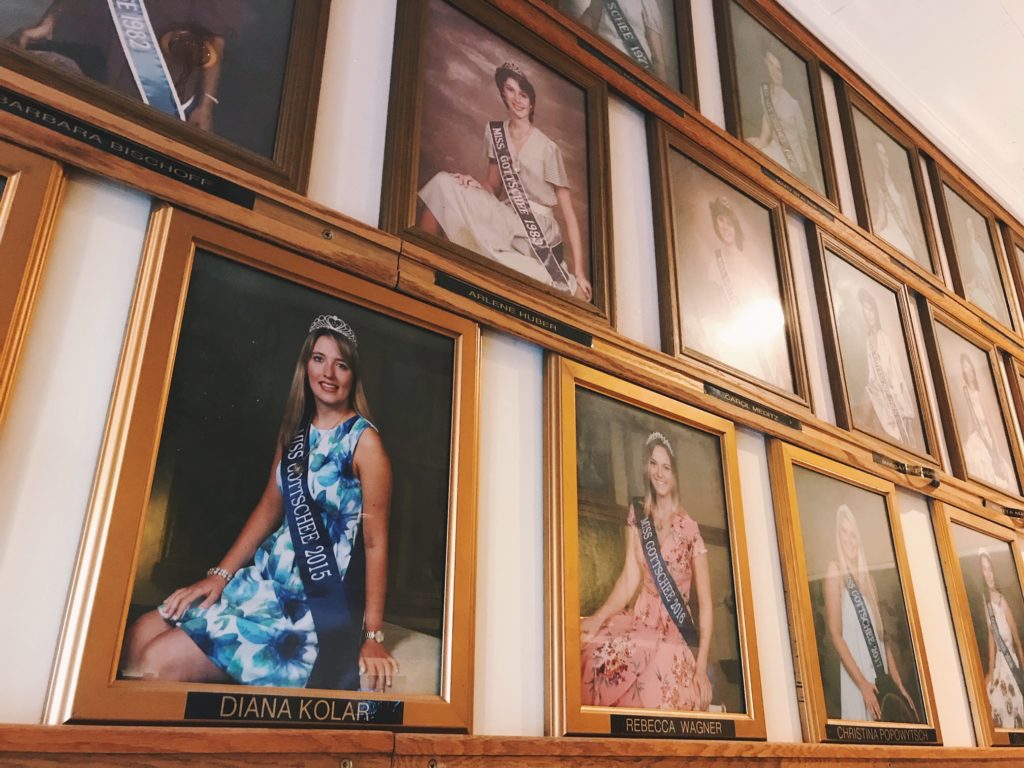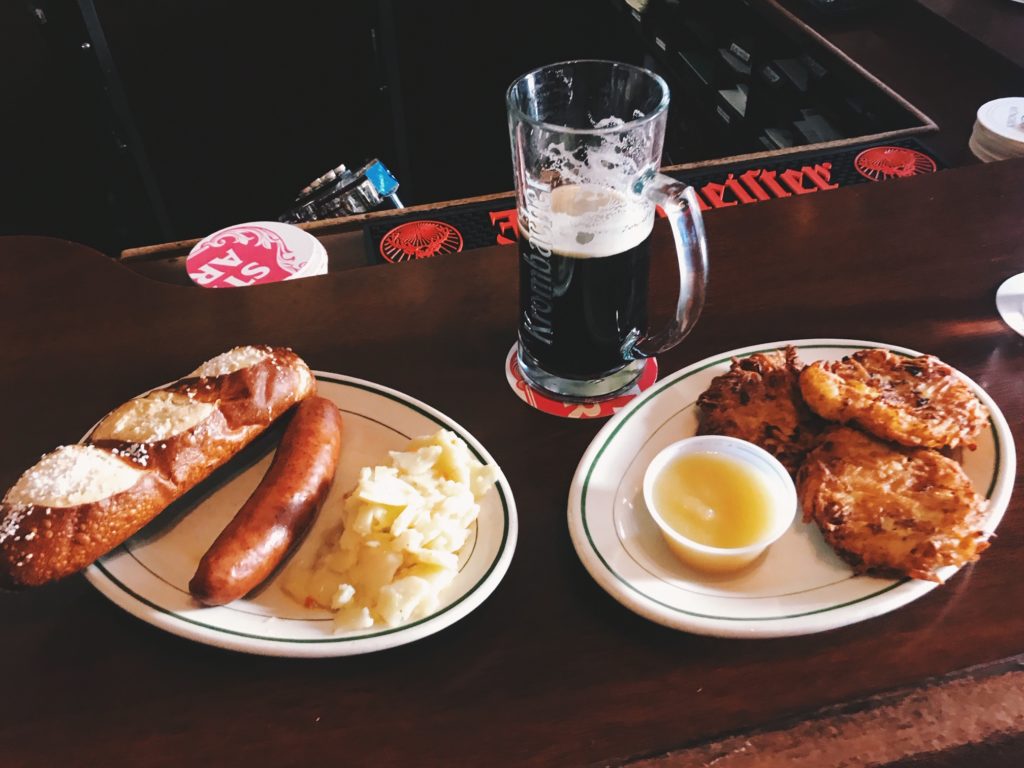On a Sunday afternoon in Ridgewood, Queens, locals cluster in a taproom inside a nondescript white-brick building called Gottscheer Hall. Middle-aged to elderly, the patrons seem to know each other well. A platter of potato pancakes, fried golden brown and piping hot, appears on the bar with a side of applesauce. People guzzle crisp Hofbraus and malty Krombacher Darks with abandon. But this isn’t your run-of-the-mill pub or German beer hall. It’s a place where displaced Gottschee immigrants put down roots nearly a century ago — and it’s up to an influx of millennials to keep the business and culture alive.
Gottschee Germans first arrived in New York in the late 19th century as part of a wave of European immigration to America, from a 330-square-mile swath of land in present-day Slovenia where they had lived since at least 1363. When the Austrian empire dissolved in 1918, so too did Gottschee, leaving tens of thousands people homeless and stateless. Many left Europe, settling in a growing community in Queens, and Gottscheer Hall was established in 1924 to serve them. The wood oak bar, still in use today, was built by Gottscheer men.
Sunday and Wednesday afternoons are when you’ll find the old-timers, including 80-year-old Joe Morscher, who spent his childhood in Altlag, the second largest town in Gottschee, before immigrating with his family to Queens in 1942. Morscher, a retired fireman, isn’t supposed to drink with the medication he’s taking for a blood clot found in his leg last month, but he has a beer anyway.
The bar’s business supports the hall’s larger purpose as a community center that is host to various clubs and social organizations. The Gottscheers call it the clubhouse. “It seems that all the Gottscheers are involved in some sort of club,” Morscher said. There’s a rod and gun club, a bowling club, a dance group, and multiple choirs – and shareholders from these clubs own the building through a holding company. Each year, the clubhouse hosts a Miss Gottschee pageant. The winners’ portraits line the hallway outside the taproom.
Helma Erbacher, 89, was born in Gottschee and arrived in Queens in 1935. She sings with the ladies’ choir, while her husband belongs to the men’s choir. Like Morscher, Erbacher laments that the Gottscheers are aging out. “We don’t know how long we’ll be able to hold on,” she said. “All the club members are dying away, and they’re not healthy enough to come to the club as much as they used to.” According to Erbacher, Gottscheer Hall’s events don’t draw the same large crowds anymore. “The young people are Americanized; they just don’t have the interest,” she said.
The president of the women’s choir, Trudy Mordhorst, is more optimistic. “Some of the clubs are getting more young people involved, so I’m hopeful,” she said, citing several millennial dancers and singers. “I’m not one of those people that’s saying everything’s going to die off.” Mordhorst, 66, who grew up in nearby Middle Village, has been singing in choirs at Gottscheer Hall every Saturday morning since she was six. Now, she brings her grandchildren to events.
Both Erbacher and Mordhorst are right. Club membership is down, according to Sonia Kulesza, the president of Gottscheer Relief Association, which oversees all of the clubs – but business is up at the bar. “We can keep prices down, and we pay our employees good,” said Joe Morscher, 62, a distant relative of fireman Joe and the president of the Gottscheer Holding Company.
Mordhorst drives to Ridgewood from Long Island, where she lives now. “People moved away because they wanted white picket fences,” said Reinhard Schmuck, a 53-year-old who recently returned to the neighborhood to care for his aging father. But young professionals moving to Ridgewood are filling some of the void left in the Gottscheers’ wake.
“There’s a lot more local traffic than there used to be because of all the young people that have moved into the area,” said Mordhorst. “They walk to the bar just to have a drink and socialize with other young people.”
Bartender Trina Fieldstadt has witnessed the changing neighborhood from behind the bar. Fieldstadt isn’t of Gottschee descent — none of the bartenders are — but has worked there for nearly two decades. “People call them the hipster crowd,” she said of the new patrons, who are mostly in their 20s and 30s and have moved to Ridgewood after being priced out of neighborhoods like Williamsburg and Bushwick. “I don’t look at them like that.”
According to Fieldstadt and the Gottscheers, the new residents are crucial to keeping the bar profitable. Business has picked up in the last ten years, but before that it was rough. In addition to Gottscheer cultural events, the hall increasingly hosts other community functions, like quinceañeras and artisan markets. It helps that the building has no mortgage or lease, the younger Morscher explained.
One of the recent arrivals is Andrew Stevens, 29. He moved to Ridgewood three years ago, scoring a room that rents for less than $800. He likes listening to the regulars talk at the bar. “For me it’s this weird liminal space where young and older people go,” he said. Stevens doesn’t feel judged at Gottscheer Hall the way he does at newer, trendier bars. “I’ve gone in sweatpants and a hoodie before,” he said.
The bar’s legacy matters to newcomers and old patrons alike. “There used to be a bunch of bars and breweries in the area, but everything closed,” said Bill Wilhemy, a 54-year-old neighborhood native who married a Gottscheer woman. “This is the only place that’s here that’s still authentic.” Wilhemy was at the bar with his high school buddy, Jake, that day. They reminisced about the neighborhood for hours.
The menu, which has stayed the same for years, boasts a selection of authentic German bar food, like spatzle, pretzels, and krainerwurst served with sauerkraut or potato salad. Nothing is more than $13, and everything tastes like hearty home-cooking.
Mordhorst may be less fatalistic than her peers, but everyone shares her sense of hope for the future of the clubhouse. “I hope we can keep it up,” said Erbacher. “We’re trying our best.” The elder Morscher emphasized that the community will have to continue to adapt, and Bill Wilhemy nodded in agreement. “There’s no place left like this,” he said.
Tags: gottscheer hall, immigration, Queens, ridgewood




Your Comments